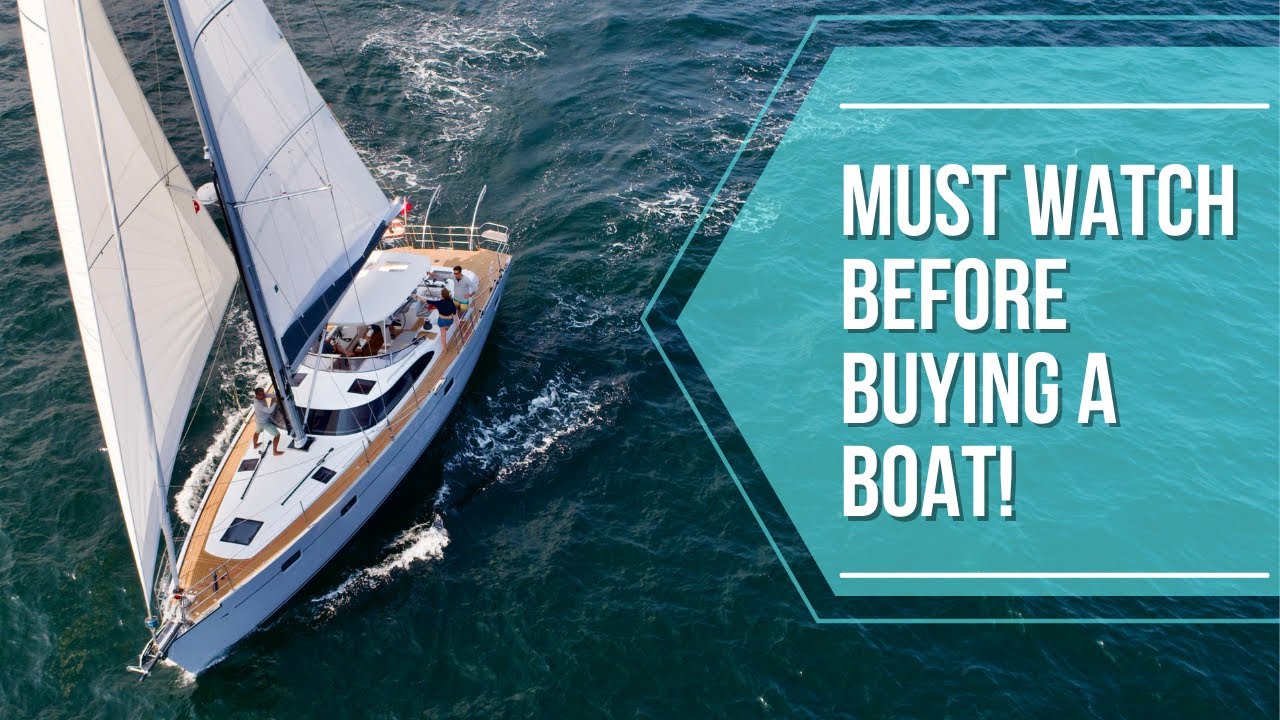Săptămâna aceasta, Adam s-a întâlnit cu Dick Beaumont, fondatorul și CEO-ul Kraken Yachts, pentru a vorbi despre toate aspectele legate de navigație și design de bărci pentru bărcile cu pânze Bluewater. Aceasta este partea a 2-a a seriei noastre de interviuri cu el. Partea 1 poate fi găsită aici: https://youtu.be/YNHCHp8yjcE Dick a navigat peste 250.000 nm, inclusiv multe regiuni îndepărtate ale lumii și în prezent navighează pe iahtul său Kraken de 66 de picioare numit White Dragon. El conduce o revistă și un podcast numit Ocean Sailor care poate fi găsit aici: Revista: https://oceansailormagazine.com/ Podcast: https://oceansailormagazine.com/podcast/ Kraken Yachts: https://www.krakenyachts.com/ Marcaje temporale: 0:34 – Bărci offshore vs generatoare 1:39 – Cum puteți împiedica contaminarea combustibilului? 5:10 – Care sunt cele 7 chei „Must Have” ale tale pentru o barcă cu apă albastră? 13:37 – Cum funcționează o instalație solent? 15:58 – Cum funcționează o platformă solent pe vreme grea? 20:03 – Poate o barcă să depășească vremea? 22:18 – Ce părere aveți despre catamaranele cu apă albastră? 28:55 – Care sunt alte considerente pentru o barcă cu pânze cu apă albastră? 31:26 – Care sunt caracteristicile de design ale unei carene de formă rotundă? 33:30 – De ce ai început Ocean Sailor Magazine? 37:22 – Ce părere aveți despre alte bărci cu apă albastră (cum ar fi Garcia)? 39:59 – Poți naviga la latitudini mari pe un Kraken? 41:26 – Fă-ți visul! Credite muzicale Toată muzica de la Epidemic Sound Cumpără-ne o bere! https://www.paypal.me/svmillennialfalcon Arată-ți sprijinul cu unele produse SMF: https://sailingmillennialfalcon.com/shop/ Vrei mai mult? Alăturați-vă nouă pe Patreon… https://www.patreon.com/Sailingmillennialfalcon Despre noi Adam și Khiara realizează videoclipuri de navigație și aventuri în jurul lumii pe Tayana Vancouver 42 din 1981. Intenționăm să navigăm în jurul lumii și să ne croim drum înapoi în Australia. Urmăriți-ne pe rețelele sociale pentru a rămâne în legătură! INSTA: https://www.instagram.com/sailingmillennialfalcon FACEBOOK: https://www.facebook.com/SailingMillennialFalcon SITE WEB: sailingmillennialfalcon.com Vrei să ne sprijini fără să te coste nimic? În calitate de Asociați Amazon, câștigăm din achiziții eligibile. Întrebări frecvente – Ce echipament de film folosim? Aparat foto: https://amzn.to/3fm0lLV Obiectiv: https://amzn.to/3rvUQfY Go Pro: https://amzn.to/2Ql11n4 Gimbal pentru telefon portabil: https://amzn.to/2Qw824B Dronie 1: https://amzn.to/2Yqv2pZ Dronie 2 (doar ep Bahamas – mai bine pentru a zbura dintr-o barcă): https://amzn.to/2Eq6PJh
source
7 caracteristici de luat în considerare într-o barcă cu pânze Bluewater | Interviu cu Dick Beaumont

50 thoughts on “7 caracteristici de luat în considerare într-o barcă cu pânze Bluewater | Interviu cu Dick Beaumont”
Comments are closed.




Absolutely so informative, so enjoyed listening to him and his experiences!
Great job!!!!!
Brilliant. Wish I'd started sailing in my 20's rather than my 40's. So much experience to try to catch up on.
Great personality, knowledgeable, yet he couldn't stop from talking about his boat that only 1% of the world population can afford. Maybe next time, if he could focus on those older boats that come closer to meeting the minimum requirements to fit his definition since no one now makes a boat that qualifies. Like Tayana, what others did a decent job in their day?
Who on earth thumb downs an interview like this… great content again.. thank you!
It’s easy when money is no object. It’s easy to say look at “old”xyz boats. Repairing and refitting old boats is neither easy, cheap or viable in most cases.
No-one lies awake fearing their keel will fall off, or their rudder will disappear in a puff if smoke. If they do, perhaps they need another hobby…
Great interview. I am not an ocean sailor but really enjoyed learning about the points that are important to blue water boats
🇨🇦❤️🇨🇦
I do t understand the reference to running backstays. In what way does a Solent rig remove the need for running backstays? Plenty of yachts have a single foresail and no running backstays, so I don’t understand the logic here, although quite agree about removing the opportunity for error with running backstays 🤔
Not Oyster or Discovery? 🤔
One point missed by Dick; shaft drive. Do you really want a sail drive with the large hull aperture required on a passage hundreds if not thousands of miles from land?
Really interested in what he thinks of the puffin yachts and KM yachtworks
Fantastic chat. Loved it.
Well done, you two, this interview (both parts), plus your published sailing experiences on the Kraken with Dick, and all the combined gems of experience and knowledge are of great value to the community. Very interesting, but not surprising, that he indicates his respect for you, and what you've done.
Enormously informative and helpful!!
So good. So many great points to consider
Well… what a good interview. I didn't think I needed a Kraken boat but now I do. If only I could afford it.
Since I can't afford a Kraken yacht, if I follow Mr. Beamonts advice, I'm looking back 20 to 30 yrs. Morgan, Pearson, beautiful boats, but something 30 yrs old can be reaching the end of it's useful life. Deck, keel, rudder, unless you have x-ray vision how will you know where you stand and what you're getting into? Anybody here deal with this?
Somehow the rationale is not linear. Your going minimum point of risk but you rely on generators to survive a passage. And Cats can handle bad weather only differently and you have to really know what your doing and still have lower but not zero risk of capsizing. And the Garcia is likely more rugged than his yachts based on performance in bad weather in high latitudes. But Cheers to a manufacturer still making really blue water boats for under handed sailing.
Very good interview but, one item that nearly always seems to be forgotten is, lightening protection. If your going tropical you need it. One benefit of a metal hull as opposed to composite.
🙏🏻…
Thoroughly enjoyed the interview full of information and also entertaining
Absolutely fascinating – so much common sense. Just shows how uncommon, common sense is. I've been hove to in an Atlantic Force 10 and was very glad to be on a proper sea boat – so fully appreciate the comments here.
One thought on multihulls. I'm nudging 70 now but well remember reading Mike McMullen's 'Multihull Seamanship' back in the 70's (yes, the 1970's). When he talked about putting escape hatches in the hull so you could exit when (not if) they turned turtle, I decided they weren't for me. He was lost at sea, in very sad circumstances, a short while later (June '76).
Lithium batteries (power tools) a fire hazard?
I don't know that I'll ever be on one, let alone to afford my own, but this guy has sold me entirely on who he is and what they're building.
VERY interesting. I'm slowly looking into a sailing yacht for myself and this to me sounds like when you are going to a car dealership and they all try to sell you Apple Car Play and the convenience of this latest All Wheel Drive technology which can take you places when in fact the freaking SUV can't drive up a damp lawn. This interview really gave a different perspective of what people should look for…. does not have to be a Kraken but certainly food for thought.
Dick you are a Diamond Geezer, full of real World Sailing Experience & happy to share your extensive knowledge
Great boat but it’s not for most of us average joes it’s for the elite class of people!
He kinda… makes modern versions of classic nayads and im all for it
Aluminum hulled trimaran baby
Great interview! But the notion that only the boats that has all the things he's talking about are bluewater boats, therefore only those boats should be used to cross oceans, means that only a few millionares will be able to do just that. There is a reason why the term is talked about like it is, it makes sailing more affordable and accessible for alot more people. Young people are crossing oceans on tiny nackered boats, and yes that might be crazy and stupid, but it's an adventure and thats what they can afford. It's ether that or looking at other people doing it from your couch at home. I wouldn't dream of letting my dreams go because they arent 100% safe! I love my little swedish 80's boat, she was the best I could afford and she's getting me out there. "The best boat for sailing is the one you've got".
unfortunately. he presents a problem about sailboats and then says hes only going to make like 5 boats a year. So what do people who want a 38 or 40ft boat and dont personally know him do ? Shame only one "acceptable brand"
Whaow! What a lecture of common sense and back to basics !!!! Thank u .
I would be interested to hear if dick ever sailed a performance cat. While what he says about cats is definitely (and unfortunately increasingly) true of charter style cats; lagoons, leopards, bali's e.c.t. Performance daggerboard cats (outremer's seawinds, e.c.t.) have proven able to sail at 30-40 degrees from the wind and apparently the dreadnought bows allowed by the narrower hull form significantly decrease the unpleasent motion he mentions.
I need a boat that goes “kashashhh kashashhh”!
This was incredibly interesting and useful information. 👏 Thank you
What about the Amel?
Well, thank you Dick Beaumont!
This series made me rethink what i need as a boat. A boat in general should have all the things youve said especially the full keel, the guarded rudder, and the thick skin. Now im not buying a 2nd hand polyester, they told me to go with steel, because that is what you can weld onto the ship in every harbor around the world. The new ships Kraken is making is pretty interesting. Real thick and heavy, and the keel an integral part of the ship. I like that.
Just today i saw a 62 year old sailor being stuck inside the hull of his ship that went over. He was stuck for 16 hours! The keel broke off.. Its the keel that does a lot of them probably. Point noted..
Yes a book on everything Dick Beaumont found out during his years of sailing would be great!
I love to watch sailing magazines too. 🙂 Ill be looking around.
Greetings,
Jeff
Oh continues, cool.
You should add (part 2) into the title, took me a little bit to figure out this was part 2. I think that is probably the only reason part 1 has such a higher view count.
Great content by the way. You two remind me of my close friends. Keep up the great work
Smart guy. I hope more boat manufacturers listen.
Kraken still has exposed prop and rudder.
Well damn, I've just had my mind changed. I've just smashed both videos and was glued.
Amazing content!!
Prior to watching this series with Mr. Beaumont, I thought I knew at lest a bit about blue water boats. I guess I still have a lot, quite a lot, to learn. Thank you for the posts. Great videos great info.
I would be interested in considerations on blue water multihulls (catamaran/trimaran) by someone putting the priorities as Dick Beaumont does.
To be fair, his position on swing keel boats is based on his sailing ethos. Here in the US, you could sail for years, never visit the same town twice, and never cross water with swells over 1 meter. If we want to do the Great Loop or pound around the Bahamas, a deep keeled boat won’t do. The Great Lakes, Finger Lakes, and Keys all require a shallow draft and the ability to adjust the rudder. This is why the US loves plastic motor yachts.
I'm half way through this. fukn hell man, sign me up!
Genuine question, why can’t twin rudders be twin-skegs?
Is there some feature that prevents fully skegging twin rudders? That would seem to be the best of all worlds?
I'm a Beaumont..Great family name.
13:15 "have a working, full-size jib and Genoa, but without running backstays". A cutter rig can also be run without running backstays (and with parallel spreaders), if the inner forestay runs to the top of the mast. A slutter rig. The 2 asymmetrical triangle shapes created by the slutter rig is so much prettier than the parallel effect of a standard cutter. A win – win situation; avoiding running backstays, and a prettier rig.
Well done interview Adam. Thanks.